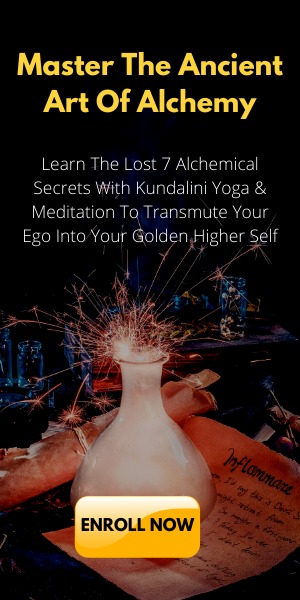Alchemy Journal Vol.7 No.1

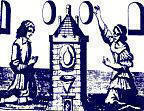
Vol.7 No.1
Spring 2006
CONTENTS
ARTICLES
Spagyrical Homeopathy
Electro-Homeopathy
Alchemical Transmutation
FEATURES
New Releases
From the Fire
Announcements
Lectures
EDITORIAL
From the Editor
Submissions
Subscriptions
Resources
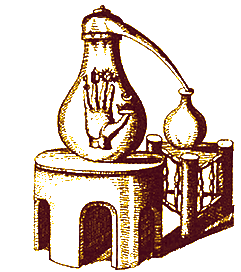 Spagyrical Homeopathy
Spagyrical Homeopathy
By Micah Nilsson
This article discusses some important but little-known differences between spagyrics and homeopathics. Both spagyrics and homeopathics are valuable healing tools, and they can work together to heal effectively and gently, as many of our clients can attest. But their differences far outnumber their similarities, and it has been something of a crusade of ours to explain these differences and clarify this issue in the minds of the public and healers, especially as spagyrics become better-known.
First, we should examine some of the history of both systems. Spagyric, as a word and process, was invented by Paracelsus, the great 16th century physician. As many of you know, it means separate and recombine, and can be used to make herbal extracts of great power and energetic force.
After studying Paracelsus, Samuel Hahnemann applied a small slice of Paracelsus’ work to create a new system, homeopathy. Homeopathy is an effective holistic healing system, but it was not part of Paracelsus’ work, being invented more than 200 years later. Homeopathy has gotten laid over Paracelsus’ work for so long and by so many that many people equate the two; an unfortunate misunderstanding that overlooks the fine points of both systems.
When you realize that these systems were invented by two different people centuries apart, it becomes more apparent that they are different modalities, and that even if one was inspired by the other, calling them the same is incorrect. But, besides these historical differences, there are great differences in the systems themselves.
Homeopathic remedies are created by extracting a substance in a menstruum, usually alcohol, then using successive dilutions and succussions of this “mother tincture” to create a remedy which is charged with a static or frozen vibrational signature of the original material used, but with none of its physical characteristics.
It is true that Paracelsus used some methods of dilution to render some of his medicines safely potable or more gentle, but the total annihilation of the substance’s physical being is from Hahnemann’s work. Paracelsus repeatedly stressed the importance of working with all three levels of the plant’s being- the obvious physical of the Salt, the life force and intelligence of the Mercury, and the eternal core of the Sulfur.
All of these levels are accessed, purified, and incorporated into the final spagyric through processes of concentration, and the final result in a properly made spagyric will be a very concentrated extract with the deep color, intense flavor, and low dosage typical of our products. The difference between our spagyrics and any homeopathics, then, is even apparent to the ordinary senses.
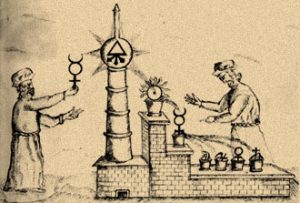 To treat at the cause of the disease, not just the symptom, requires that all three levels be present in the spagyric to operate on the patient, who also has these three levels of being. Stripping away all but a reflection of the Mercury level of a substance (the homeopathic process), therefore, is not Paracelsian, and by definition, not spagyric. We should also note here that we are the only company to truly implement the Paracelsian philosophy in this regard, and uniquely offer three different levels of Spagyric medicines.
To treat at the cause of the disease, not just the symptom, requires that all three levels be present in the spagyric to operate on the patient, who also has these three levels of being. Stripping away all but a reflection of the Mercury level of a substance (the homeopathic process), therefore, is not Paracelsian, and by definition, not spagyric. We should also note here that we are the only company to truly implement the Paracelsian philosophy in this regard, and uniquely offer three different levels of Spagyric medicines.
That the original substance is changed so much as to be no longer its original self can be easily seen by looking at such homeopathic remedies as Hydrophobinum, Anthracinum, Belladonna, or Arsenicum Metallicum. If one ingested rabid dog’s saliva, anthrax, deadly nightshade, or arsenic in their natural state, illness or death would result; as homeopathics, these substances are used to great healing effect.
The crux of homeopathy is this taking of a deleterious substance and, in effect, flipping or reversing it into a healing remedy. The homeopathic processing overrides the original substance- it is no longer anthrax, etc., but a homeopathic remedy. The same mechanism occurs with spagyrics treated homeopathically- the end results are homeopathics, and no longer spagyrics.
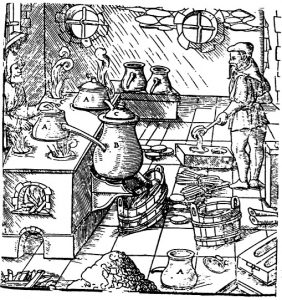 This “flipping” was strongly demonstrated to us by a healer we work with who had been treating several patients with our spagyrics, and seeing great improvements in their illnesses. After running out of stock of our spagyrics, she obtained homeopathic preparations which another company had made from our spagyrics (unauthorized and against our advice), thinking they would be the same.
This “flipping” was strongly demonstrated to us by a healer we work with who had been treating several patients with our spagyrics, and seeing great improvements in their illnesses. After running out of stock of our spagyrics, she obtained homeopathic preparations which another company had made from our spagyrics (unauthorized and against our advice), thinking they would be the same.
This healer quickly discovered that, not only did they not heal as well, they actually made the patients’ ailments worse in most cases! She called us in a panic, not knowing what to do, but after only a few treatments with new stock of our true spagyrics, her patients were again back on their course of improvement and healing. This case shows how, just as something harmful can be reversed into a medicine, so, too, can the opposite occur, creating a reaction much like a homeopathic proving. That event, and other experiments we have done, are why we never recommend dilution of our spagyrics in any way.
Spagyrics are made following a continuum of process and energy, and that continuum should be kept intact in their use. But they do work very effectively when used in conjunction with homeopathics, and many of our clients work this way. Homeopathics do a great job of smoothing out layers of symptom and imbalance, to allow the patient to become more clear, receptive, and open to the deeper long-term work that spagyrics can then be brought in for.
We hope that this has been enlightening for you. We encounter this misunderstanding frequently, and are dedicated to ensuring that the alchemical healing lineage we follow is presented truthfully and completely. This misperception occurs more and more often as large European pharmaceutical companies realize the profitability of taking labour-intensive spagyric mother solutions and stretching them into sometimes thousands of gallons of sellable homeopathic product. We are perhaps old-school purists in this regard, but profitability is not the motive for our work — the facilitation of physical and spiritual healing is.
Micah Nilsson and Paul Bartscher founded Al-Qemi in 1991 to research and put into modern practice the ancient healing work of the alchemists. Since then, we have provided discriminating clients with a complete Alchemical and Spagyric apothecary, including not only products, but a practical system for their use. Our system, based on our research into alchemical texts from many centuries, has led us to a truly holistic understanding of health and wellness, an understanding which we have applied to create a line of products to promote health and longevity at all levels of being. In ancient times, alchemists were often called Philosophers of Nature because their method of work consisted of observing natures operations and then applying them in the laboratory. This crucial link, between the rhythms and processes of nature and the healing work of mankind, has been largely forgotten by most of today’s physicians. In our work we seek to revive this ancient spiritual chemistry for healing and wisdom in the modern world. Website: www.al-kemi.com . Email: [email protected]
Paracelsus pointed out that the vital energy of an herb is more important than the plant material itself. The four key steps of Spagyrics are: separation, purification, incineration and re-unification. After studying Paracelsus, Samuel Hahnemann applied a small slice of Paracelsus’ work to create a new system, homeopathy.
Life is in Blood and Lymph and disease in its Vitiations, and the medicine is placed between two classes of phenomenon: disease and the normal state of the organism.
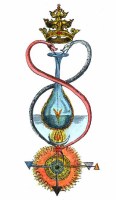 Electrohomoeopathy: A Revolution in Medical Science
Electrohomoeopathy: A Revolution in Medical Science
By Dr. Ajit Singh
Inventor and Invention
The medical system of Electrohomoeopathy is an art of healing through herbs only. The inventor, Grafen Ceasre Mattei (Count Ceasre Mattei,1809-1896), who was an Italian to whom the title of Count was Bestowed by Pope Pius IX, was very impressed with the healing effects of Spagyrism and Homoeopathy. So, Mattei started to treat patients by making medicine with a unique process of cohobation and ultimately discovered a new theory and concept of health and disease after the 30 year of experiments. It is stated in the form of the principle that: “Life is in Blood and Lymph and disease in its Vitiations, and the medicine is placed between two classes of phenomenon: disease and the normal state of the organism.” The result of its intervention is, at first, to lessen then gradually destroy and finally expel the “evil.” So, in this way Mattei declared his new invention in 1865.
Why the Name Electrohomoeopathy? Is it Different from Homoeopathy?
Due to the rapid effects of the medicines, Mattei gave it the name Electrohomoeopathy. In Mattei’s own words he stated that “These electric phenomenon strike me as very remarkable, and from them I have given the name of Electrohomoeopathy to the medicine which Providence has made known to me. By this word, I desire to express the fact that these remedies are a class of Electroids conforming to the law of similars and that they posses a power and promptness which allows them to be compared to electricity.” Mattei further stated that from this new phenomenon and especially from the changes in the organism that follow a state of health is created. He also said; “I contend that my discovery supplies what was wanting in the Materia Medica of Hahnemann.” This is only one reason to use the word homoeopathy in Electrohomoeopathy. Other specific differences between Homoeopathy and Electrohomoeopathy are as follows:
1) Hahnemann (inventor of homoeopathy), tried the effects of his remedies on the healthy man and afterwards, from his observations of their effects, he founded what homoeopaths call the “pathological genesis of homoeopathic medicines” which made known the sphere of their action on invalids.
2) According to Mattei (inventor of Electrohomoeopathy), there is only
one straight way to arrive at the knowledge of medicinal power and that is
to try remedies on the sick man and to note the class of diseases they are
fit to cure.
3) Mattei, like Hahnemann, did not recommend subdivisions of remedies, that is
dynamisation, to produce the real effects by almost infinitesimal doses.
Law of Dosology
Mattei said that the: “Dose should be given in an inverse ratio to the gravity of the disease.” As per Electrohomoeopathy philosophy that a cure is simply the result
of organico-vital reactions caused by agents which we call remedies, and that such reactions are lessened in proportions as less vitality remains in the centre of the organism and to the inveteracy of the disease, it will be seen why it is necessary to diminish the quantity of medicine in ratio to the intensity of the malady. To do otherwise would be contradicted to the general law of nature, namely that: “Reaction is always equal and opposite to action.”
Electrohomoeopathy Pharmacy
Electrohomoeopathy medicines are known as the Spagyric essences, which are
prepared from 114 medicinal herbs by a very delicate process of cohobation. In alchemy, cohobation is the reassembling of the purified elements obtained by means of spagyrism. It is not concerned with the act of passing a solvent again and again over a substance to open it and to dissolve it as per the definition given by Glaser. A spagyric essence is clearly colorless to yellowish and smells very intensively aromatically.
Pharmacodynamics of Electrohomoeopathy Spagyric Essences
he active ingredients in Electrohomeopathic medicines are the mineral salts which function by stimulating neuro immuno endocrine system. The ways that this stimulation is brought about are:
(i) By direct activation of certain pathways.
(ii) By correcting malfunction in absorption, transportation and excretion.
(iii) By redistributing mineral salts, trace elements, etc., which due to stress, disease or medication, have become locked up in the wrong place. For instance, infection and cortisone treatment induce the transport of zinc and iron to the liver and the release of copper to the bloodstream. In edema, sodium in excess quantity enters the cells. Electrohomeopathic medicines restore cell membrane integrity and restore proper absorption, transportation and excretion, which are essential in accordance with “transformation of matter” as per physiology.
(iv) By compensating for a deficiency induced inactive pathway, it means
redistributing any scarce element to the tissues at potential risk or activating some alternative pathway. For instance, vitamin E and selenium have a number of overlapping roles. If vitamin E synthesis is stimulated, selenium deficiency would be less critical.
Safety of Electrohomoeopathy Spagyric Medicines:
Spagyric medicines are produced in such a way that no alkaloids or toxic molecules can be found in the final products. Though pure and undiluted, their efficacy may be compared with the “highly diluted” homoeopathic remedies. They have no known side effects. The advantage of these spagyric essences is that they contain organic and inorganic materials, small alcohol content and, used in the recommend dosage, are very compatible with normal conditions. The active substances of the essence can be proven with modern analytic technology, both in quality and quantity. These plant life concentrates contain a unique ability to:
1) Alkalise the PH, neutralizing acidity
2) Remove many toxins and toxic molecules from the body
3) Cleanse and purify the liver within 28 days
4) Oxygenate the cells, allowing more oxygen into the cell and brain
5) Destroy harmful free radicals
6) Rid the body of harmful bacteria
7) Purify and regulate the blood, effecting blood circulation and sugar levels
8) Build the immune system
9) Relieve pain caused by acidosis and inflammatory processes
Electrohomoeopathy is very different from the system of “the similar and the pathogeny” of Hahneman. It is true that Hanneman’s system is attractive on intellectual grounds, but it is very easy to get lost in it, even for a confirmed homeopath. The big dilemma, and the center of homoeopath discussions, is to know if a high dilution rather than a low dilution is to be used. This is not the case with spagyry which always turns to the composed substance and asserts that it is not necessary to dilute a substance to the infinite to increase its field and depth of action. The spagyric experience demonstrates this easily.
Classification of Electrohomoeopathy Medicines.
Mattei gave eight specific groups of medicine in addition to five “electricities”, also known as the electric fluids, which are mostly used in making a compress for the body points. Mattei classified the medicines in groups as follows:
Name of Medicine Action
1. Antiscrofoloso Group For purification of the lymph
2. Antiangitico Group For purification of the blood
3. Antilymphatico Group For lymph metabolism disorders
4. Pettorale Group For respiratory problems
5. Vermifugo Group For all kinds of infective germs and worms
6. Antivenereo Group For constitutional disorders, venereal disease
7. Febrifugo Group For all kinds of fevers and as nerve remedy
8. Anticanceroso Group For all kinds of cancers, benign and malignant
9. Five Electric Fluids
a) Red Electricity Stimulant
b) White Electricity Sedative
c) Blue Electricity Antihaemorrhagic
d) Green Electricity Pain killer
e) Yellow Electricity Intestinal remedy
In addition to these medicines, there are 36 Electrohomeopathy injections that were prepared by Theodore Krauss, one of the great followers of Mattei. He further manipulated true Electrohomoeopathy and created Electro-Complex Homoeopathy in Germany. Production of this medicine was begun by the ISO-Arzneimittel Company under the name of Homoeopathy Medicines and the formulation was also listed in the official German Homoeopathy Pharamacopiea as the “Spagyric after Krauss.”
Dr. Ajit Singh practices electrohomeopathy and acupuncture as well as conducts research on medicinal plants in Punjab, India. Dr. Singh can be contacted at: [email protected]m. Website: www.sbeamattie.com.
Spagyric medicines are produced in such a way that no alkaloids or toxic molecules can be found in the final products. Though pure and undiluted, their efficacy may be compared with the “highly diluted” homoeopathic remedies. They have no known side effects.
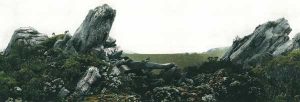 Alchemical Transmutation, Spiritual Transformation, and the Artistic Creative Process
Alchemical Transmutation, Spiritual Transformation, and the Artistic Creative Process
By Lisa Falk
In my late 30’s I found myself at the end of my tether and with no other alternative than to return to what felt right for the sake of my sanity and the freedom of my soul, which was to draw. I had spent most of my life trying to please ‘others’ whose goals, expectations, and desires were insatiable. I had lost myself by allowing myself to be thus used. I had become a dead object, a tool, a trophy – of various people and systems.
My first exhibition I titled “Meditating on Rock.” During the process of producing the 9 drawings that composed this body of work, I undertook an investigation into the nature of the human ego, thought and desire, assisted by a man described as a humanist philosopher – Jiddu Krishnamurti. (1) This was a journey into myself; a journey of understanding and self-knowledge based on ruthless honesty. I had nothing to lose, after all, I was already lost. Physical and psychological trauma had created a wound that was in need of healing but it had also annihilated my ego’s cunning defences and thus I was ripe for this undertaking and the confrontation with my shadow and my soul. As I drew, I saw a mysterious process emerging in my artwork of which I had not previously been aware. I first noticed it in hindsight as I looked back at what I had done; there were metaphors and symbols and apt revealing references in the landscapes I had chosen to depict, and also in the titles I had assigned to them. These things reflected my psyche like an open sunlit window into my heart and mind, or a mercurial mirror through which I could walk into my very soul. This both fascinated and unsettled me much as it did the early alchemists, whom in order to understand the nature of matter and the chemicals with which they were experimenting, involuntarily projected yet another mystery into it – their own psychic background.
Drawing became a wholistic process of re-integration where virtually all of my activities and actions – even the music I was listening to at the time – became dynamically involved and relevant in relation to the understanding of myself. This was a “truth meditation” and not a honing of concentration or a consolidation of consciousness, nor a “zoning out” that involved suppression and resistance. There was a synthesis occurring – of conscious and unconscious elements of knowledge and action – and a transformation of “me.” I was breaking free and sprouting wings to meet my destiny.
” When meditation is concerned with the objective products of the unconscious that reach consciousness spontaneously, it unites the conscious with contents that proceed not from a conscious causal chain but from an essentially unconscious process.” (2)
Later, I realized that the centre of my personality was shifting from the ego to the Self. Carl Jung describes the Self as comprising the totality of the psyche altogether i.e., the conscious and the unconscious – the ego is only the point of reference for consciousness. (3)
” If the secret psychic Person can come forward into the front and, replacing the desire-soul, govern overtly and entirely and not only partially and from behind the veil of this outer nature of mind, life and body, then these can be cast into soul images of what is true, right and beautiful and in the end the whole nature can be turned towards the real aim of life, the supreme victory, the ascent into spiritual existence.” (4)
I was undergoing “individuation” – a spiritual transformation whereby a person becomes a psychological ”in-dividual” – a separate, indivisible unity. But whilst meditating on rock, I was not yet aware of this as the process was immediate and my knowledge and understanding for the purposes of conscious definition were still lacking.
My next body of work, Exhibition 2, I titled “Reflection, Illusion and Reality.” Here, I delved deeper into issues of thought, memory, conditioning, war, peace, bliss, meditation, belief systems, seeking, death and disillusionment – the latter two topics seeming especially poignant as I found myself poised on the brink of a precarious, precancerous prognosis.
I survived to mount Exhibition 3, which I playfully titled ” Drawing Out the Spirit,” simply because, firstly, I draw and secondly because I am interested in understanding the natural essence of all things. Little did I expect what unfolded as I flexed my new found wings. After exploring the nature of ritual, fear, conformity and beauty with the first three pieces, I found myself drawn to a mountainous alpine region of Tasmania called The Labyrinth. On the way there, at sunset, I was mesmerized by a shocking-pink cloud swirling swiftly around the top of a mountain like a snaking dragon chasing its tail. Interestingly the origin of the word “dragon” comes from derkesthai, which means “to see.” And the next day, whilst descending The Acropolis, I had a premonition of a friend’s death which was confirmed on my return from the wilderness many days later. To date, I had been exploring issues from a very rational base but from this point on I seemed to enter another realm – that of the irrational and the psychic. I had been very focused on “reality” and what I had perceived to be the “truth” of things and, like a kickback from the tension of the opposites or from being too far out on a rational limb, I was suddenly catapulted into a surreal irrational abyss – it was time to start flapping those wings!
I titled Drawing No. 4, which was a view of The Guardians from The Labyrinth, “The Guardian of the Threshold.”
Drawing became a wholistic process of re-integration where virtually all of my activities and actions – even the music I was listening to at the time – became dynamically involved and relevant in relation to the understanding of myself. This was a “truth meditation” and not a honing of concentration or a consolidation of consciousness, nor a “zoning out” that involved suppression and resistance.
 Drawing No. 4. ‘ The Guardian of The Threshold.’
Drawing No. 4. ‘ The Guardian of The Threshold.’
April, May, June, 2004.
Mt. Gould, The Minotaur, The Guardians, and Walled Mt.
The Labyrinth. (Dedicated to Alan Sajben. 1954 – 2003.)
‘ guardian, n. …..a protector;…’
‘ guardian angel : An angel or spirit supposed to be assigned to a person as guardian and protector. ‘
Hayward and Sparkes. (1982) The Concise English Dictionary. Omega Books.
‘ When everything wants to change into light and colour we become painters. Colours become revelations of life, death, soul, spirit. By overcomong dead thought we attain to the point where we no longer feel impelled to speak in words, no longer to think in ideas, no longer to mould in forms, but use colour and light to represent life and death, spirit and soul, as they have their being in the universe.’
Rudolph Steiner. (1923) The Arts and Their Mission. Anthroposophic Press.
‘ cairn … n. A pyramidal heap of stones, esp. one raised over a grave or to mark a summit, track, or boundary.’
Hayward and Sparkes.(1982) The Concise English Dictionary. Omega Books.
‘ The many paths that man has invented to reality are born of fear, actually there is no path at all.’
J. Krishnamurti. (1991) Meeting Life. Harper Collins.
‘ Then comes the rain, a cloudburst that relaxes tension and makes the earth fertile. In mythology, rain was often thought to be a “love union” between heaven and earth. In the Eleusian mysteries, for instance, after everything had been purified by water, the call went up to heaven: ” Let it rain !” and down to earth: “Be fruitful !” This was understood as a sacred marriage of the gods. In this way rain can be said to represent a “solution” in the literal sense of the word.’
Jolande Jacobi. (1978) ‘Symbols in an Individual analysis,’ from Man and his Symbols, Ed. C.G. Jung.
‘ But without the ending of sorrow I do not see how one can ever be enlightened, how one can ever have wisdom.’
J. Krishnamurti. (1991) Meeting Life. Harper Collins.
“What can be learned through the physical senses leads to a door. To enter the realms where we may perceive what lies behind the outer world, we must overcome certain inner dangers. If a human being is to tread the path leading through this door, he must first attain, in his thoughts, feelings and will, a certain inner steadiness. That is why entering this door is called passing ‘The Guardian of the Threshold.’
On entering physical existence at birth, inevitably we carry with us our eternal-divine being; but if its source is to be recognized, we must first become aware of the abyss lying between earth life and the regions of cognition which we must enter in order to know our own being. In the case of cognition one must travel a road of purification before passing the gate to the spiritual world: The abyss can be bridged by art.” (5)
Synchronicity and ecstatic states seeped into my life – the first truly memorable experience occurring on the 8th of June after climbing Mt. Amos, one of three small mountains collectively called The Hazards on the east coast. This was the day of the transit of Venus when Venus (love) and the Sun (light) united as one. Only later did I discover the possible significance of Venus transits for global unity in relation to major breakthroughs in communication. (6) Both Carl-Johan Calleman and Sri Aurobindo propose the next possible and necessary evolutionary step will involve the mind and psychic connections of oneness.
Approximately one month later on my 44th birthday whilst still learning to fly, I came upon an ancient soul. I was resting, perched high on a rocky outcrop surrounded by thigh deep snow and inhaling a 360 degree highland vista. It was the middle of winter in the south-west wilderness, the sun was shining and I was being served “high tea” – I felt like the Queen of Sheba. The ancient Egyptians called the soul the Ba.
“The Ba comes to the place it knows; It does not miss the path of its former life. No form of magic holds it back; It comes to those who offer it water.” (7)
The next three drawings were rock and seascapes. The sea is an excellent symbol of the unconscious realm and a likely place for the birth of visions and invasion by unconscious contents. These drawings came under the title of “The Gold Nugget Trilogy,” and are various depictions of The Nuggets, four little islands off the east coast of the bigger island of Tasmania, which lies south of the mainland of Australia. Some alchemists hoped to produce actual gold in their exploration of the chemical world: others hoped to find the “philosophical gold,” the elixir, the panacea, divinity, immortality, God. All I knew was – the more I drew, the more meaningful coincidences occurred in my life and the more it felt like I was being led along by something far greater and more powerful than my petty, conscious ego’s apparent needs and desires. I began to have dreams like none that I had ever experienced before – extremely vivid and numinous. These were Oneiros – dreams as originally described by Artemidorus – dreams that awaken and excite the soul. I told no one, but, after having had the first few of these bewildering dreams, I fortunately found myself in possession of a manuscript written by a friend of a friend and based around numinous dreams that they themselves had had. This had an understandably calming effect – at least I was not alone. This manuscript was my first introduction to Jung.
Drawing No. 8 in this series I titled “Lapis Philosophorum.”
On entering physical existence at birth, inevitably we carry with us our eternal-divine being; but if its source is to be recognized, we must first become aware of the abyss lying between earth life and the regions of cognition which we must enter in order to know our own being. In the case of cognition one must travel a road of purification before passing the gate to the spiritual world: The abyss can be bridged by art.
 Drawing No. 8. ‘ Lapis Philosophorum.’
Drawing No. 8. ‘ Lapis Philosophorum.’
November, December, 2004.
The Denison Range.
‘ Et ille dicitur lapis invisibilitatis, lapis sanctus, res benedicta ‘
( And it is called the stone of invisibility, the sacred stone, the blessed thing.)
‘ Rosarium, Art. aurif., 11, ‘ from Psychology and Alchemy, by C. G. Jung. (2000) Routledge.
‘ lapis……[L.,…..(lapis, stone,…..)…..’
‘ philosopher …. [ ….Gr. philosophus ( PHILO-, sophos, wise )], n. A lover of wisdom;…’
Hayward and Sparkes. (1982) The Concise English Dictionary. Omega Books.
‘ Very early in history men began trying to express what they felt to be the soul or spirit of a rock by working it into a recognizable form. In many cases, the form was a more or less definite approximation to the human figure – for instance, the ancient menhirs with their crude outlines of faces, or the hermae that developed out of boundary stones in ancient Greece, or the many primitive stone idols with human features. The animation of stone must be explained as the projection of a more or less distinct content of the unconscious into the stone…..’
‘We know that even unhewn stones had a highly symbolic meaning for ancient and primitive societies. Rough, natural stones were often believed to be the dwelling places of spirits or gods, and were used in primitive cultures as tombstones, boundary stones, or objects of religious veneration..’
‘Many examples show the artist’s concern with the “self-expression” of the stone; to use the language of myth, the stone is allowed to “speak for itself .”
‘ Medieval alchemists, who searched for the secret of matter in a prescientific way, hoping to find God in it, or at least the working of divine activity, believed that this secret was embodied in their famous “philosopher’s stone”. But some of the alchemists dimly perceived that their much-sought-after stone was a symbol of something that can be found only within the psyche of man…… The alchemical stone (the lapis) symbolizes something that can never be lost or dissolved, something eternal that some alchemists compared to the mystical experience of God within one’s own soul. It usually takes prolonged suffering to burn away all the superfluous psychic elements concealing the stone. But some profound inner experience of the Self does occur to most people at least once in a lifetime.’
Ed. C. G. Jung. (1978) Man and his Symbols. Picador.
‘The Self, at the beginning of life, encompasses the potential totality of the personality, but like a seed or genetic blueprint, it also develops over time. Jung elaborated his developmental perspective on the Self in his alchemical amplification of its journey from a chaotic massa confusa to the integrated lapis or Philosopher’s Stone which, by containing all contradictory opposites, symbolizes an ideal condition of wholeness and health.’
Ed’s. Polly Young-Eisendrath and Terence Dawson. (1997) The Cambridge Companion to Jung. Cambridge University Press.
‘The “instinct of truth” is seen by some theologians as an aspect of the Holy Ghost… Psychologically, the immediate awareness of what is right and true for the personality…..indicates a connection with the Self; in alchemical language it is the philosopher’s stone.’
Marie-Louise von Franz. (1980) Alchemy. An Introduction to the Symbolism and the Psychology. Inner City Books.
My fascination with rock culminated here in all its crowning glory – I “came out” and unashamedly admitted to having rocks in my head. (But if “the speaking stones have lain a long time looking at the sun,” (8), surely they must be very enlightened.)
“Here stands the mean, uncomely stone; Tis very cheap in price! The more it is despised by fools, The more loved by the wise.” (9) – Arnaldus de Villanova, from Jung, A Biography, by Gerhard Wehr. (1987) Shambhala Publications.
The Latin word lapis means “stone” and the Philosopher’s Stone is a symbol of wholeness and immortality. Some alchemists compared the Alchemical Stone, the lapis, to the mystical experience of God within one’s own soul. Much to my amusement, I recently discovered that Alisanos was a Celtic god worshipped around Gaul and the C’ote-d’Or (the City of Gold) as the Spirit of the Rock. The number 8 has also been associated with immortality, gold, rebirth and resurrection. In Taoist philosophy, there are eight immortals, seven of whom are saints or sages, but the eighth is a girl who sweeps up the fallen flowers at the southern gates of heaven.
“Mewstone Island, Morpheus and the Spirit of Mercurius,” Drawing No. 9, depicts Mewstone Rock, another island off the south coast of Tasmania. It also depicts surreal patterns traced out by salt water in sand around a piece of seaweed on South Cape beach.
Medieval alchemists, who searched for the secret of matter in a prescientific way, hoping to find God in it, or at least the working of divine activity, believed that this secret was embodied in their famous “philosopher’s stone”. But some of the alchemists dimly perceived that their much-sought-after stone was a symbol of something that can be found only within the psyche of man.
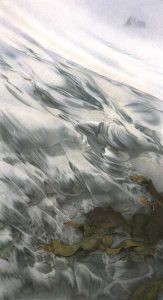 Drawing No. 9. ‘ Mewstone Island, Morpheus, and The Spirit of Mercurius.’
Drawing No. 9. ‘ Mewstone Island, Morpheus, and The Spirit of Mercurius.’
January, February, 2005.
Mewstone Island, seaweed, and sand
patterns at South Cape Bay.
‘ I have risen up in the form of a hawk, I have become pure, I have become neter, I have become a spirit. I have become strong. I have become a soul (ba).’
‘Book of the Dead,’ from The Gods of the Egyptians. Studies in Egyptian Mythology. Vol 1, by E. A. Wallis Budge. (1969) Dover Publications, Inc.
‘ Morpheus ….. [ L., prob. from Gr. morphe, form ], n. (Ovid ) The God of dreams;….’
Hayward and Sparkes. (1982) The Concise English Dictionary. Omega Books.
‘ Behind the particular visible shapes of matter must lie ghostly forms serving as invisible templates. Forms in motion.’
D’arcy Wentworth Thompson. ‘ On Growth and Form ,’ from Chaos, (1988) by James Gleick. Penguin.
‘….flow wants to realize itself, regardless of the surrounding material.’
Johann W. von Goethe, from Chaos. (1988) by James Gleick. Penguin.
‘ Formation, transformation, the eternal minds eternal recreation.’
C.G. Jung. (2002) The Archetypes and the Collective Unconscious. Routledge.
‘ In the overwhelming majority of cases alchemy identifies its transforming substance with the argentum vivum or Mercurius. Clinically this term denotes quicksilver, but philosophically it means the spiritus vitae, or even the world soul, so that Mercurius also takes on the significance of Hermes, god of revelation.’
‘ Mercurius as quicksilver is an eminently suitable symbol for the ‘fluid’ i.e., mobile intellect. Therefore in alchemy Mercurius is sometimes a ‘spirit’ and sometimes a ‘water’, the so called aqua permanens, which is none other than argentum vivum.’
C.G. Jung. (2000) Psychology and Alchemy. Routledge.
‘ Quicksilver was one of the older symbols for the divine water on account of its silvery-white sheen.’
‘ Altogether, the divine water possessed the power of transformation. It transformed the nigredo into the albredo through the miraculous “washing” (ablutio); it animated inert matter, made the dead to rise again, and therefore possessed the virtue of the baptismal water in the ecclesiastical rite.’
‘ Mercurius is also said to arise from the moisture like a vapour ( which again points to his spiritual nature), or to rule the water.’
C.G. Jung. (1983) Alchemical Studies. Princeton University Press.
‘The mystery of everything is life, which is water; for water dissolves the body into spirit and summons a spirit from the dead. Dissolution into spirit, the body’s volatilization or sublimation, corresponds chemically to evaporation, or any rate to the expulsion of evaporable ingredients like quicksilver, sulphur etc. Psychologically it corresponds to the conscious realization and integration of an unconscious content.’
‘ For Parcelsus sulphur, together with Sal (salt) is the begetter of Mercurius, ….’
‘ The bird is a parallel of salt, because salt is a spirit, a volatile substance, which the alchemists were wont to conceive as a bird,….’
C.G. Jung. (1989) Mysterium Coniunctionis. Princeton University Press.
‘ And there is in fact one substance in which everything is contained and that is the sulphur philosophorum, (which) is water, and soul, oil, Mercurius, and Sol, the fire of nature, the eagle, the lachryma, the first hyle of the wise, the materia prima of the perfect body.’
‘VIII Exercitatio in Turbam,’ from Psychology and Alchemy, by C.G. Jung. (2000) Routledge.
‘ eagle-hawk, n. A South American hawk of the genus Morphuus.’
Hayward and Sparkes. (1982) The Concise English Dictionary. Omega Books.
. ‘ The eagle signifies height……Birds are thoughts and the flight of thought. Generally it is fantasies and intuitive ideas that are represented thus ( the winged Mercurius, Morpheus, genii, angels )………The eagle – synonymous with phoenix, vulture, raven – is a well known alchemical symbol denoting intuition or spiritual (winged) potentiality. In the last resort all these symbols depict the consciousness-transcending fact we call the Self.’
‘ The sea is a favourite place for the birth of visions ( i.e., invasions by unconscious contents).’
C.G. Jung. (2000) Psychology and Alchemy. Routledge.
‘ …..the bird is the most fitting symbol of transcendence. It represents the perculiar nature of intuition working through a “medium”, that is, an individual who is capable of obtaining knowledge of distant events – or facts of which he consciously knows nothing…..’
Ed. C G Jung. (1978) Man and his Symbols. Picador.
‘ mew (3)…. […. L., mutare, to change ], n. A cage for hawks esp. whilst moulting; a place of confinement; a den; ( pl.) royal stables in London (built on the spot where the royal hawks were formerly mewed);….’
‘ hawk (1)……. n. A name for many species of raptorial birds allied to the falcons;…’
Hayward and Sparkes. (1982) The Concise English Dictionary. Omega Books.
‘ According to the tradition Merlin had retreated to the solitude of the forest in order to escape from the troubled world, the world of King Arthur and the Round Table. According to Breton legends he had disappeared into a kind of rock tomb, a “tower” (!). Hence people also spoke of a “stone of Merlin”, set up far away from all the turmoil of the world of men. If esplumoir refers to the designation for Merlin’s refuge in a cage in which falcons moulted, thus going through a transformation, this too is a striking parallel to Jung’s undertaking in Bollingen, an individually fashioned quest for the Grail.’
Gerhard Wehr. (1987) Jung, A Biography. Shambhala Publications.
‘ The Ba has been regarded as a “ghost” or “apparition” in funerary literature, but in the spiritual context it refers to the visible manifestation of any spiritual being, the soul.’
‘The Ba comes to the place it knows,
it does not miss the path of its former life.
No form of magic holds it back,
it comes to those who offer it water.’
Merikara. Dynasty 18.
Rosemary Clark. (2000) The Sacred Tradition in Ancient Egypt. Llewellyn Publications.
Most of my drawings are quite photo-real with a surreality only in the detail and on closer inspection. This one, however, is largely surreal in its actual reality and thus an apt representation of the conscious and unconscious potentially blending as one. Putrefying seaweed, lowly like the mean uncomely stone and spurned, is a sulphurous substance, and for the alchemist Paracelsus, sulphur and salt gave birth to Mercurius. “The spiritus mercurialis is the alchemist’s guide and their tempter; he is their good luck and their ruin.” (10) Mercurius, god of revelation, is also a symbol for the spirit imprisoned in matter and of winged spiritual potential. The word “mew” is derived from a Latin word meaning “to change” and thus transform. Morpheus, god of dreams, presaged a rebirth – a moulting of my feathers like the royal hawks in the mews.
Drawing No.10 I titled “At the Gates of Delirium – mysterium coniunctionis.”
According to the tradition Merlin had retreated to the solitude of the forest in order to escape from the troubled world, the world of King Arthur and the Round Table. According to Breton legends he had disappeared into a kind of rock tomb, a “tower”. Hence people also spoke of a “stone of Merlin”, set up far away from all the turmoil of the world of men.
The coniunctio here ends with an incarnation of the Divinity. It is God coming down into the human being. That is what Jung has formulated in saying that what is seen from the human angle as being the process of individuation, as seen from the angle of the image of God is a process of incarnation.
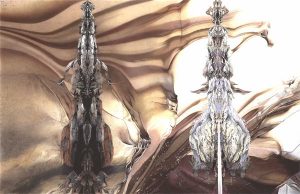 Drawing No. 10. ‘ At the Gates of Delirium – mysterium coniunctionis.’
Drawing No. 10. ‘ At the Gates of Delirium – mysterium coniunctionis.’
March, April. 2005.
Sandstone rock at South Cape Bay,
and water/rock reflections at Lake Sydney.
‘ Soon, oh soon the light,
Pass within and soothe this endless night.’
Yes. ‘The Gates of Delirium,’ from Relayer.( 1974) Atlantic Recording Corporation.
‘ ….the coniunctio here ends with an incarnation of the Divinity. It is God coming down into the human being. That is what Jung has formulated in saying that what is seen from the human angle as being the process of individuation, as seen from the angle of the image of God is a process of incarnation.’
‘ Individuation is a spiritual undertaking……’
David L. Hart. ‘The classical Jungian School,’ from The Cambridge Companion to Jung. Ed’s. Polly Young-Eisendrath and Terence Dawson. (1997) Cambridge University Press.
‘ ….the coniunctio, i.e., the union of an outstanding man, a king, with a queen etc., which is said to be an image of the union of the soul with God, the soul of man being thought of as feminine: the anima marries God in the moment of highest religious ecstasy and therefore in that moment the mystic is a bride who marries the Godhead…….the unio mystica of the soul with God..’ Marie-Louise von Franz. (1980) Alchemy. An Introduction to the Symbolism and the Psychology. Inner City Books.
‘…….it is evident that the authors of such pictures were trying to portray an inner process of development independent of their consciousness and will. The process usually consists of the union of two pairs of opposites, a lower (water, blackness, animal, snake etc.) with an upper (bird, light, head etc.), and a left (feminine) with a right (masculine).’
C. G. Jung. (1983) Alchemical Studies. Princeton University Press.
‘ Very often the masculine-feminine opposition is personified as King and Queen. In the Rosarium philosophorum also as Emperor and Empress, or as servus (slave) or rubeus (redman) and mulier candida (white woman); in the “Visio Arislei” they appear as Gabricus (or Thabritius) and Beya, the King’s son and daughter. Theriomorphic symbols are equally common and are often found in the illustrations.’
C. G. Jung. (1989) Mysterium Coniunctionis. Princeton University Press.
‘ theriomorphic, -phous [ Gr. morphe, form ], a. Having the form of a beast. ‘
Hayward and Sparkes. (1982) The Concise English Dictionary. Omega Books.
‘Another favourite theriomorphic image is that of the two birds or two dragons, one of them winged, the other wingless. This allegory comes from an ancient text, De Chemia Senioris antiquissimi philosophi libellus. The wingless bird or dragon prevents the other from flying. They stand for Sol and Luna, brother and sister, who are united by means of the art.’
C.G. Jung. (1989) Mysterium Coniunctionis. Princeton University Press.
‘ This principle is pagan in feeling and an expression of nature worship. Nature not only contains a process of transformation – it is itself transformation. It strives not for isolation but for union, for the wedding feast followed by death and rebirth. Paracelsus’s “exaltation in May” is this marriage, the “gamonymus” or hierosgamos of light and darkness in the shape of Sol and Luna. Here the opposites unite what the light from above had sternly divided. This is not so much a reversion to antiquity as a continuation of that religious feeling for nature, ….’
C. G. Jung. (1983) Alchemical Studies. Princeton University Press.
‘ gamo- [ Gr. gamos, marriage ],….’
‘ heiro- [ Gr. hieros, holy ],…..Sacred; pertaining to sacred things. ‘
Hayward and Sparkes. (1982) The Concise English Dictionary. Omega Books.
‘ ….according to the Hui Ming Ching, the gaze of one who has attained fulfilment turns back to the beauty of nature.’
C.G. Jung. (1983) Alchemical Studies. Princeton University Pressv
‘ In order to catch the soul God created the vas cerebri, the cranium. Here the symbolism of the vessel coincides with that of the head, …..’
‘ Here we have an indication of the psychic nature of the arcanum, for the head of a man signifies above all the seat of consciousness….’
‘ For there came one in haste at early morning, who overpowered me, and pierced me through with the sword, and dismembered me in accordance with the rule of harmony. And he drew off the skin of my head with the sword, which he wielded with strength, and mingled the bones with the pieces of flesh, and caused them to be burned upon the fire of the art, till I perceived by the transformation of the body that I had become spirit. And that is my unendurable torment” And even as he spoke thus, and I held him by force to converse with me, his eyes became as blood. And he spewed forth all his own flesh. And I saw how he changed into the opposite of himself, into a mutilated anthroparion, and he tore his flesh with his own teeth, and sank into himself. ‘ – ‘The treatise of Zosimos the Divine, concerning the Art.’
‘ In our text the skinning refers especially to the head, as though signifying an extraction of the soul….
C.G. Jung. (1983) Alchemical Studies. Princeton University Press.
‘ Beheading is significant symbolically as the separation of the “understanding” from the “great suffering anf grief”, which nature inflicts on the soul. It is an emancipation of the “cogitatio” which is situated in the head, a freeing of the soul from the “trammels of nature.” ‘
C.G. Jung. (1989) Mysterium Coniunctionis. Princeton University Press.
‘ In alchemical literature, the procedure of transfixing or cutting up with the sword takes the special form of dividing the philosophical egg. It, too, is divided with the sword, i.e., broken down into the four elements. … The dividing sword seems to have a special significance in addition to those we have noted. The “consilium coniugii” says that the marriage pair, sun and moon, “must both be slain by their own sword, imbibing immortal souls until the most hidden interior (i.e., the previous) soul is extinguished.” In a poem of 1620, Mercurius complains that he is “sore tormented with a fiery sword.”……It is the fiery sword brandished by the angel at the gates of paradise that torments him, and yet he himself is this sword……In both, the sacrificer is the sacrificed, and the sword that kills is the same as that which is killed…..
C.G. Jung (1983) Alchemical Studies. Princeton University Press.
This drawing is of a sandstone rock-face with water-rock reflections from the edges of a lake, which I turned side-on and placed like theriomorphic guardians at the gates to the unconscious realm. Delirium is defined as “rapture, enthusiasm and ecstasy,” or “unreal delusions, illusions and hallucinations.” Here also the opposites are united in a tense balance of, and for, reflection – the line between the rock and the water is tenuous, as it is between madness and religious ecstasy, between reality and illusion, between the real and the surreal. I tread this fine line in the process of individuation. I pass through these gates in the process of understanding and self-knowledge. A phase transition of consciousness occurs at the critical point when the opposites are indistinct, free of conflict, at one and harmonious. The coniunctio is the mystical marriage, the union of the soul with God, of Shiva with Shakti, the male with the female, the conscious with the unconscious. “10” is the goal of the opus – wholeness through the mirror of wisdom – ” the unity of personality projected into the unity of the stone.” (2)
I draw from a state of love with a clear and open mind and so my drawings are spiritual revelations. I draw out the spirit and the spirit draws me, in a dynamic cycle of inspiration and reanimation; this is spiritual transformation akin to alchemical transmutation. I follow Alisanos, my nose, my instincts and my intuition, and then I sweep up the flowers that fall from the heavens. My Kundalini serpent has awoken and Nataraja dances. The Green Man (11), the archetype of our oneness with the earth, has manifested and is stirring.
I am in love with life, and my opalescent soul is soaring untethered and free.
References:
(1) J. Krishnamurti. Commentaries on Living. 1st, 2nd, 3rd, series. Quest Books.
(2) C.G. Jung. (1989). Mysterium Coniunctionis. Princeton University Press.
(3) C.G. Jung. (2002). The Archetypes and the Collective Unconscious. Routledge.
(4) Sri Aurobindo. (1960). The Life Divine. Sri Aurobindo Ashram. Pondicherry.
(5) Rudolph Steiner. (1923). The Arts and Their Mission. Anthroposophic Press.
(6) www.experiencefestival.com
(7) “Merikara. Dynasty 18” from: Rosemary Clark. (2000). The Sacred Tradition in Ancient Egypt. Llewellyn Publications.
(8) Nobody. (1996). Dead Man. A film by Jim Jarmusch. Pandora Film.
(9) Arnaldus de Villanova. from: Gerhard Wehr. (1987). Jung, a Biography. Shambhala Publications.
(10) C.G. Jung. (2000). Psychology and Alchemy. Routledge.
(11) William Anderson. (1990). Green Man: The Archetype of our Oneness with the Earth. Compass Books.
Lisa Falk is an alchemical artist. Some of Lisa’s artwork is available for sale in print form and in varying sizes. Occasionally original artwork is also available. Lisa can be contacted at [email protected] or via her website www.lisafalk.com All artwork is copyrighted by Lisa Falk – all rights reserved.
For there came one in haste at early morning, who overpowered me, and pierced me through with the sword, and dismembered me in accordance with the rule of harmony. And he drew off the skin of my head with the sword, which he wielded with strength, and mingled the bones with the pieces of flesh, and caused them to be burned upon the fire of the art, till I perceived by the transformation of the body that I had become spirit. And that is my unendurable torment” And even as he spoke thus, and I held him by force to converse with me, his eyes became as blood. And he spewed forth all his own flesh. And I saw how he changed into the opposite of himself, into a mutilated anthroparion, and he tore his flesh with his own teeth, and sank into himself.
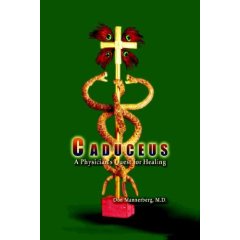 FEATURES
FEATURES
New Releases
Caduceus: A Physician’s Quest for Healing
by Dr. Don Mannerberg
ISBN 1932196862. Word Wright International, 2006. Pbk. 172 pp. $13.95
<< To order this book online, click on bookcover.
Dr. Don Mannerberg takes Jungian psychology a step beyond theory — he applies it to his life. Integrating the science of medicine with psychology and mythology, he transforms his knee surgery into a quest for the Holy Grail. In his opus, Caduceus, he elucidates the symbolism of disease and the mystical nature of healing. With gifts of pure compassion and unique insight into basic alchemical processes, he unveils the transformational tendencies of the human psyche. His journey demonstrates wisdom of physician heal thyself. In this book, he describes the challenges and rewards of his own alchemical adventure — an adventure that many aspire to but few attempt. A true mystic of our times, he draws the map for those of us who dare to explore our own psyche in order to reclaim our own hidden, priceless treasures.
From the Fire by Dennis William Hauck
Daniel Schmidt has alerted me to the fact that someone has patented the ancient alchemical recipe for Oil of Egg. This appears to be an arrogant and flagrant attempt to control ancient wisdom to make money. We all know the miraculous healing powers of Oil of Egg. According to medieval alchemists, Oil of Egg contains highly purified life force energy that can be applied to many ailments. The formula has always been in the public domain, but as of today it is “illegal” to make it without a license from a German company. This is an outrage! Frater Albertus’ Paralab sold it and making it was part of the the curriculum at Paracelsus College. PON taught it as well. Now, Jurgen Roehmig of Pohlheim, Germany, has taken out a patent on the formulation in 34 countries that makes criminals of us all. Check out the clever way their product is presented at www.roehmig.com/davinci/html/uk/uk_eggoil_01.htm.
Could this be the start of a trend? I have to wonder how long it will be before corporations realize the potential of alchemical preparations and take their production out of the public domain. The basic tenet of practical alchemy is that anyone can make tinctures and oils in the privacy of their own homes. Alchemy is a grass roots effort that must remain in the control of people who serve nothing else but the very life force they carry in themselves. We are courting disaster if we work with alchemical preparations in any other way but on the personal level. Sorry, I’m just not ready for the Great Work Inc.
Because alchemy is a complex, ancient, esoteric concept for most of us, my hunch is that your first idea or picture was a traditional or stereotypical one – perhaps an old man dressed in medieval attire, surrounded by odd utensils, staring into a small furnace – but it changed into a kaleidoscope of other images and concepts. This flux of mental constructs, pictures, and feelings intrigues me. Somewhere along the broad continuum of definitions of alchemy that is created by each of our various contributions to this question is the answer. And, at some point along this continuum what alchemy truly is becomes a form of alchemy as it is applied or experienced in the world.
Announcements
- English into Spanish translation services. Excellent quality offered by Mexican writer and translator, based in London (acquainted with alchemy literature). Visit http://www.freewebs.com/diazenciso/
- Free eBook Om Yoga: Its Theory and Practice by Swami Nirmalananda Giri is an in-depth book on the practice of Om Meditation, an ancient alchemical meditation in Hinduism. Download from: http://www.atmajyoti.org/spirwrit-downloads.asp
- Writers Wanted! The Alchemy Journal is looking for articles on any aspect of alchemy, including biographies, historical material, practical laboratory work, spagyric recipes, philosophical pieces, poetry, experiences in personal transformation, spiritual insights, Hermeticism, Gnosticism, book reviews, film and video reviews, website reviews, artwork, etc. Please submit your material or queries via email to [email protected].
Lectures & Conferences
June 9-11, 2006. Harmony Festival in Santa Rosa, California
Always a great time, outdoors with good music, good food, and lots to see and do, what else could you want for a nice summer weekend? Information at www.harmonyfestival.com. Paul and Micah from Al-Qemi will be sampling and selling their line of tinctures and other products at the event. You can contact them at (541) 345-3456.
June 23-25, 2006. She Shamans & Magic Mamas in Geyserville, California
This one will be really fun! Paul and Micah from Al-Qemi will be set up and speaking at this conference about women’s spirituality and Entheogens and plant-based sacred paths, to be held at a very unique venue in the heart of wine country. I will be speaking about Alchemy and the Voice of Nature, and how Spagyric work, as a plant-based spiritual practice, is the Shamanic aspect of Alchemy. There will be many other visionary and powerful speakers from the worlds of plants and women’s wisdom, and I am sure it will be an enlightening weekend for all. Information at www.sheshamans.com.
July 29-31, 2006. Spagyrics & Alchemy: Plant Medicines & Initiatics
An in-depth seminar presenting teachings about alchemy, spagyric medicines, the Hermetic lineage from which alchemy derives its philosophy, and the research and work we have done to bring this ancient science out of hiding and into living practice. The teachers of this intensive have been practicing laboratory alchemists for sixteen years, focusing on Paracelsian medicine and alchemy as a plant-based spiritual path path. We have done a great deal of work with Shamanic and magical plants in alchemy, and we teach alchemy as a method of connecting to a deep and personal understanding of Nature and her energies. Cost is $350 per person, limited to 20 students. For more information contact Paul or Micah at 541-345-3456 or visitwww.al-kemi.com.
November 10-12, 2006. Green Festival in San Francisco, California
This is the premiere event for products, ideas, and networking to support sustainable living at all levels, attended by over 10,000 people last year. Green Festival brings together community, likeminded leaders and businesses in celebration of sustainable economy, ecological balance and social justice. Paul and Micah from Al-Qemi will be sampling and selling their line of tinctures and other products at the event. You can contact them at (541) 345-3456. Information on the event is at www.greenfestivals.org.
EDITORIAL
From the Editor (by Duane Saari)
What is alchemy?
I am really curious about the range and variety of answers that appeared in your mind and the minds of other readers when seeing this question. We all have an image or idea that first comes into our consciousness when presented with this question. And yet, because alchemy is a complex, ancient, esoteric concept for most of us, my hunch is that your first idea or picture was a traditional or stereotypical one – perhaps an old man dressed in medieval attire, surrounded by odd utensils, staring into a small furnace – but it changed into a kaleidoscope of other images and concepts. This flux of mental constructs, pictures, and feelings intrigues me. Somewhere along the broad continuum of definitions of alchemy that is created by each of our various contributions to this question is the answer. And, at some point along this continuum what alchemy truly is becomes a form of alchemy as it is applied or experienced in the world.
The three contributors to this issue share descriptions or examples of their work that are related to alchemical processes and can have a direct affect on the experience of our daily lives. Micah Nilsson makes a distinction between spagyrics and homoeopathy. Both approaches are related to alchemy and create products that directly affect the functioning of our bodies. Dr. Ajit Singh describes Electrohomoeopathy, a method that uses a special technique related to cohobation – a fundamental procedure of alchemy – to create spagyrical treatments. Lisa Falk reveals the unique, personal, transformative process she experiences and uses in her drawings I am certain will affect how you see and feel.
Are these individuals alchemists? I can tell you they would not describe themselves as such. Are they practicing alchemy? You tell me.
Submissions
Submit your articles on any aspect of alchemy. We are looking for biographies, historical articles, practical laboratory work, spagyric recipes, philosophical pieces, experiences in personal transformation, spiritual insights, Hermeticism, Gnosticism, book reviews, film and video reviews, website reviews, artwork, etc. Please submit your material or queries via email to [email protected].
Subscriptions and Archives
The Alchemy Journal is published quarterly at the annual solstices and equinoxes. Issues are posted at the Alchemy Lab website on the journal archives page at www.AlchemyLab.com/journal.htm. This page also contains a Directory of Past Issues and an Index of Articles. To subscribe to the journal, simply send a blank email to [email protected].
Alchemy Resources


 Spagyrical Homeopathy
Spagyrical Homeopathy To treat at the cause of the disease, not just the symptom, requires that all three levels be present in the spagyric to operate on the patient, who also has these three levels of being. Stripping away all but a reflection of the Mercury level of a substance (the homeopathic process), therefore, is not Paracelsian, and by definition, not spagyric. We should also note here that we are the only company to truly implement the Paracelsian philosophy in this regard, and uniquely offer three different levels of Spagyric medicines.
To treat at the cause of the disease, not just the symptom, requires that all three levels be present in the spagyric to operate on the patient, who also has these three levels of being. Stripping away all but a reflection of the Mercury level of a substance (the homeopathic process), therefore, is not Paracelsian, and by definition, not spagyric. We should also note here that we are the only company to truly implement the Paracelsian philosophy in this regard, and uniquely offer three different levels of Spagyric medicines. This “flipping” was strongly demonstrated to us by a healer we work with who had been treating several patients with our spagyrics, and seeing great improvements in their illnesses. After running out of stock of our spagyrics, she obtained homeopathic preparations which another company had made from our spagyrics (unauthorized and against our advice), thinking they would be the same.
This “flipping” was strongly demonstrated to us by a healer we work with who had been treating several patients with our spagyrics, and seeing great improvements in their illnesses. After running out of stock of our spagyrics, she obtained homeopathic preparations which another company had made from our spagyrics (unauthorized and against our advice), thinking they would be the same. Electrohomoeopathy: A Revolution in Medical Science
Electrohomoeopathy: A Revolution in Medical Science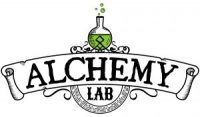
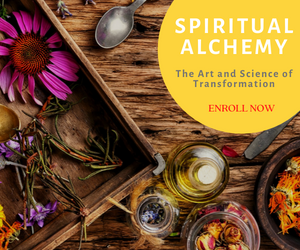
 Alchemical Transmutation, Spiritual Transformation, and the Artistic Creative Process
Alchemical Transmutation, Spiritual Transformation, and the Artistic Creative Process Drawing No. 4. ‘ The Guardian of The Threshold.’
Drawing No. 4. ‘ The Guardian of The Threshold.’ Drawing No. 9. ‘ Mewstone Island, Morpheus, and The Spirit of Mercurius.’
Drawing No. 9. ‘ Mewstone Island, Morpheus, and The Spirit of Mercurius.’ Drawing No. 10. ‘ At the Gates of Delirium – mysterium coniunctionis.’
Drawing No. 10. ‘ At the Gates of Delirium – mysterium coniunctionis.’ FEATURES
FEATURES